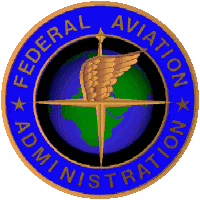Mon, Jul 14, 2003
Avidyne Leading Development Of VDL-3 Avionics To Support FAA's
NEXCOM System
 Avidyne Corporation has
successfully demonstrated the first commercial NEXCOM VDL Mode 3
radios, which will be the cornerstone of general aviation voice and
data communications for the 21st century. This was the first
simultaneous voice and data demonstration and the first flight test
of any commercial avionics VDL Mode 3 radio.
Avidyne Corporation has
successfully demonstrated the first commercial NEXCOM VDL Mode 3
radios, which will be the cornerstone of general aviation voice and
data communications for the 21st century. This was the first
simultaneous voice and data demonstration and the first flight test
of any commercial avionics VDL Mode 3 radio.
The demonstration was flown on an FAA test aircraft utilizing
the FAA's prototype ground station at the FAA technical center in
Atlantic City. All ground station modes were demonstrated during
the flight including urgent downlink request, next channel uplink,
controller override, and digital voice using 2V2D mode.
 Prior to the flight test, extensive
formal lab and aircraft ground tests successfully exercised all
data and voice modes, including simultaneous voice and data with
multiple Avidyne radios communicating with the FAA's prototype
ground station. This included the 3V long-range voice modes,
exercising the full 200-mile range capability of VDL Mode 3.
Prior to the flight test, extensive
formal lab and aircraft ground tests successfully exercised all
data and voice modes, including simultaneous voice and data with
multiple Avidyne radios communicating with the FAA's prototype
ground station. This included the 3V long-range voice modes,
exercising the full 200-mile range capability of VDL Mode 3.
"Avidyne was founded to develop revolutionary, low-cost avionics
systems, and we are pleased to be the lead developer of NEXCOM
systems for general aviation," said Avidyne president Dan Schwinn.
"This marks a major milestone for our industry, demonstrating the
viability and availability of commercial avionics to meet the
aviation communication needs for the next 50+ years."
 Avidyne's self contained panel
mounted radio was designed to meet the future communication needs
for the general aviation market at a reasonable cost, with
specifications at least equal to air transport class radios.
Avidyne's self contained panel
mounted radio was designed to meet the future communication needs
for the general aviation market at a reasonable cost, with
specifications at least equal to air transport class radios.
Avidyne previously completed a formal demonstration
of digital voice with the FAA's ground station in March 2003.
NEXCOM?
NEXCOM is the FAA's radio system of the 21st century. It is an
analog/digital system incorporating the latest technological
advances in radio communications. NEXCOM will provide capability to
accommodate additional sectors and services; reduce logistical
costs; replace expensive to maintain VHF and UHF radios; provide
data link communications capability; reduce A/G RF Interference and
provide security mechanisms. When completed over 46,000 radios will
be installed throughout the FAA system. The NEXCOM system will
enhance the FAA's ability to meet expanding air traffic control
communication demands.
More News
Light Gun A handheld directional light signaling device which emits a brilliant narrow beam of white, green, or red light as selected by the tower controller. The color and type of>[...]
“We have performed extensive ground testing by comparing warm up times, full power tethered pulls, and overall temperatures in 100 degree environments against other aircraft >[...]
While Taxiing To Parking The Right Landing Gear Leg Collapsed, Resulting In Substantial Damage Analysis: The pilot made a normal approach with full flaps and landed on the runway. >[...]
From 2014 (YouTube Edition): Exotic Rebuild Reveals Aerial Work Of Art During EAA AirVenture 2014, ANN's Michael Maya Charles took the time to get a history lesson about a great ai>[...]
Also: Project Talon, McFarlane Acquisition, Sky-Tec Service, JPL Earth Helo Tests Bombardier has earned a round of applause from the business aviation community, celebrating the fo>[...]
 ANN's Daily Aero-Term (12.13.25): Light Gun
ANN's Daily Aero-Term (12.13.25): Light Gun Aero-News: Quote of the Day (12.13.25)
Aero-News: Quote of the Day (12.13.25) NTSB Final Report: Gippsland GA-8
NTSB Final Report: Gippsland GA-8 Classic Aero-TV: Historically Unique -- Marlin Horst's Exquisite Fairchild 71
Classic Aero-TV: Historically Unique -- Marlin Horst's Exquisite Fairchild 71 Airborne 12.12.25: Global 8000, Korea Pilot Honors, AV-30 Update
Airborne 12.12.25: Global 8000, Korea Pilot Honors, AV-30 Update





